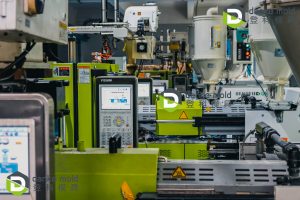Plastic injection molding is a widely used manufacturing process for producing a vast range of plastic products. While it has many benefits, such as high efficiency and low cost, it also has significant environmental impacts. The plastic waste generated from injection molding processes contributes to pollution and environmental degradation, and it is important to find solutions for a more sustainable future. That is perhaps what explains the essence and importance of the need for eco friendly operations and processes.
Fortunately, there are several solutions and sustainability measures that can be implemented in plastic injection molding processes to minimize their environmental impact. In this blog post, we will explore some of these solutions and discuss how they can contribute to a more sustainable manufacturing industry. That way, we would also contribute towards the best possible experiences in achieving more positive trends in getting access to the best environmental friendly concepts and processes.

Material Selection
The first step towards sustainable plastic injection molding is to choose eco-friendly materials. Biodegradable and compostable plastics are an excellent option for reducing environmental impact. These materials can be easily decomposed by natural processes, reducing waste and pollution. Most of the plastic injections molding companies today have been moving toward this goal today.
Recycling
Recycling is a crucial solution to reduce the environmental impact of plastic injection molding. Plastic waste generated from injection molding can be recycled and reused to produce new products. This reduces the amount of plastic waste that ends up in landfills and the environment. Additionally, recycling can help to reduce the use of virgin materials, conserving natural resources. We have witnessed this since long and you would find it a very decent option in achieving a better standard in helping you care for your nature.
Energy Efficiency
Energy-efficient practices can also contribute to sustainable plastic injection molding. The use of renewable energy sources such as solar, wind, or hydropower can help reduce the carbon footprint of injection molding processes. In addition, energy-efficient equipment and processes, such as efficient heating and cooling systems, can help to reduce energy consumption and greenhouse gas emissions.
Lean Manufacturing
Lean manufacturing practices can help to reduce waste and improve efficiency in the injection molding process. By optimizing processes and reducing waste, lean manufacturing can minimize the environmental impact of injection molding while also increasing productivity and profitability.
Sustainable Packaging
Sustainable packaging is also an important factor to consider in plastic injection molding. By using sustainable packaging materials, such as biodegradable or compostable materials, or reducing packaging altogether, the environmental impact of plastic products can be further minimized.
In conclusion, plastic injection molding has significant environmental impacts that can be reduced through sustainable solutions. Material selection, recycling, energy efficiency, lean manufacturing, and sustainable packaging are all important factors to consider when striving for a more sustainable plastic injection molding process. By implementing these solutions, manufacturers can reduce their environmental impact while also improving efficiency and profitability. As consumers, we can also contribute to a sustainable future by choosing eco-friendly products and supporting companies that prioritize sustainability.
